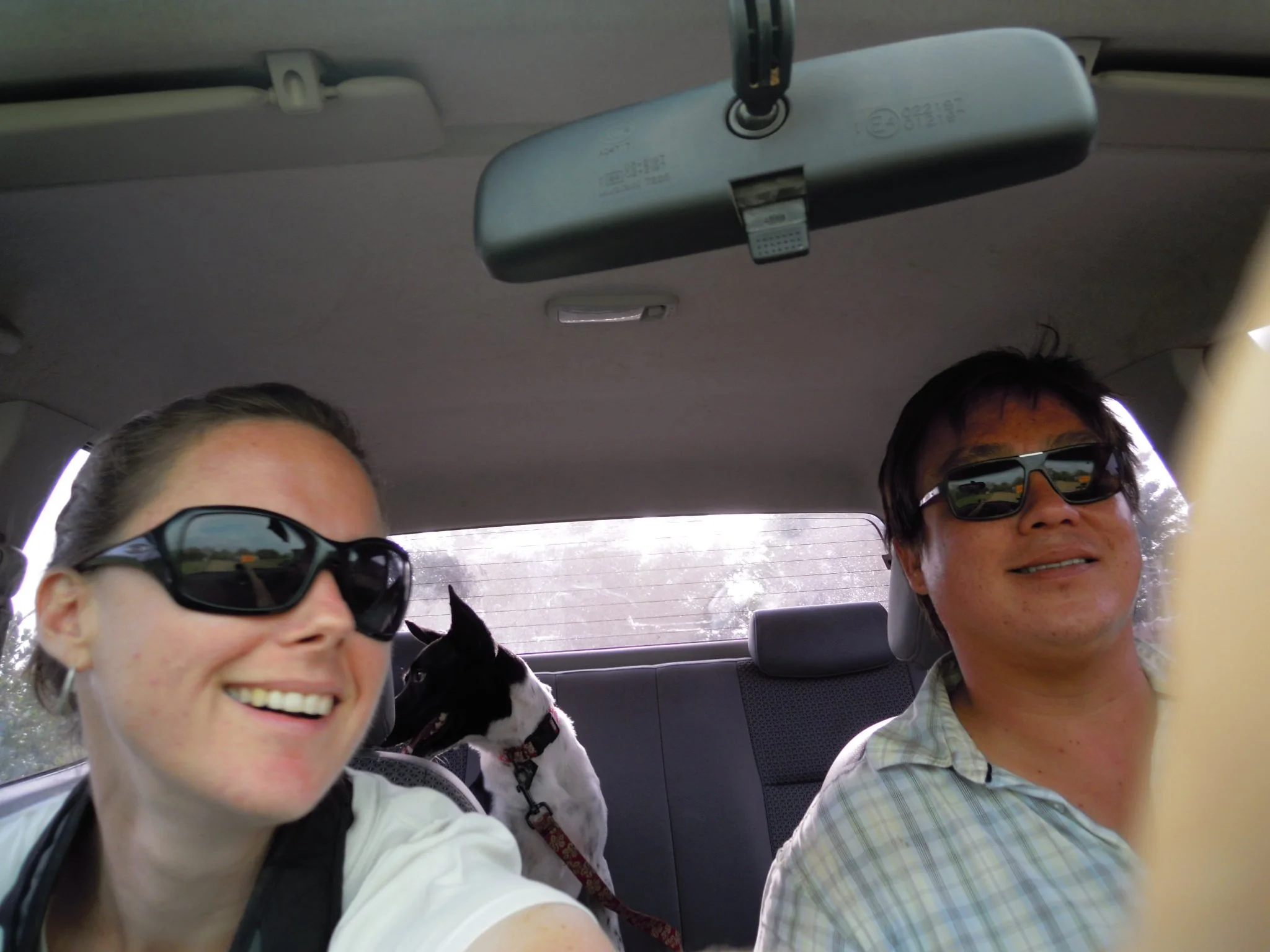2008 - From Bushwick to Pedasí: A Practice Reimagined
IM/KM Architecture and Planning was founded by Kristin and Ivan, whose complementary design approaches were forged during their studies at SCAD and honed through years of practice in New York City. Their move to Panama in 2008 marked a turning point, grounding their work in sustainability, land stewardship, and context-driven architecture across the Americas.
IM apartment in the lower east side - 1999
IMKM polariod selfie - 1998
author
KRISTIN MORALES, LEED BD+C
FOUNDER / PRINCIPAL DESIGNER
IVAN MORALES
FOUNDER / PRINCIPAL DESIGNER
We met as architecture students at the Savannah College of Art and Design, both dedicated, hardworking, and armed with the healthy skepticism of youth. To say we clicked immediately would be an exaggeration.
It was around 2 AM, and Eichberg Hall was closing. Tensions ran high as final presentations loomed. Although we shared a studio, we weren't colleagues, much less friends. Ivan's studio was disruptive and loud, whereas mine was disciplined and quiet. That evening, passing each other in the hallway, I initiated conversation with a mild jab about the noise level from his studio. Without missing a beat, he shot back, “Do you guys even speak to each other over there?” This friendly rivalry had been ongoing throughout the semester and would continue for the next three years.
Later that week, however, something shifted. We attended each other's final presentations and realized that despite our different approaches, we shared a profound commitment to and passion for design.
Ivan presented his project—a convent design—on a large paneled canvas of black and red, boldly forgoing traditional architectural drawings. His audacious approach and impressive execution intrigued me. I appreciated then, as I do now, his inclination to challenge expectations. My project was a community center and information pavilion designed as a flexible kit-of-parts, adaptable to various sites. My presentation took the form of a fictional newspaper printed on grey Canson paper, inviting viewers to learn about the design through drawings, details, and narratives.
Yes, our approaches were starkly different, yet we soon discovered they complemented each other remarkably well.
After graduation, we married and moved to New York City, immersing ourselves in careers at award-winning design firms. By 2008, we had both gained extensive professional experience, mastering the complexities of large-scale architectural projects in NYC. The work was satisfying and challenging, yet we found ourselves yearning for more.
We ventured deeper into Brooklyn, settling in Bushwick before its development boom. After years in restrictive railroad apartments, we finally occupied a spacious loft, where—for the first time since college—we had room to draw, paint, and experiment freely. Despite its charms, New York City can be harsh; I vividly remember Ivan persistently painting an oversized triptych on the kitchen wall of our cramped 350-square-foot Lower East Side apartment. Each painting session forced dishes and appliances aside, and our home often smelled of turpentine, prompting frequent takeout orders from Kosmo.com.
IMKM Bushwick loft - 2007
In our new loft, liberated by space and established careers, we began entering architectural competitions, discovering the thrill of working for ourselves. Balancing office work by day and creative experimentation by night was demanding but exhilarating. By 2008, nearly a decade into traditional architectural roles, we formally established IM/KM Architecture and Planning, eager to pursue our passion collaboratively and independently.
During this period, Ivan was named project architect for a residential project in Panama. As the design progressed, our client unexpectedly asked Ivan during a conference call if he would move to Panama to oversee the project's construction. Despite his boss being on the call—and despite the awkwardness of the moment—Ivan immediately responded with an emphatic “No.” Having grown up in Mexico, he wasn't eager to uproot his life for a small Panamanian town, Pedasi, which seemed dull compared to the bustling city life we knew.
Yet, soon after, we reconsidered. I had never lived abroad and saw this as an exciting opportunity. At that point in our careers, taking a temporary step away from New York felt feasible. After much discussion, we agreed a short-term relocation to Panama might be just the adventure we needed.
We visited the site with the client later that year. It was my first time there, and I was stunned by its remoteness and wildness. We drove along a cliff-edge dirt path, arriving at a seemingly untouched coastline. Standing there, faced with the vastness of the task ahead, the true challenge of the project crystallized. Still, despite our initial apprehensions, we decided to accept the challenge and planned to stay for nine months to supervise the construction.
As our departure neared, we put our belongings into storage, said our farewells to family, friends, and colleagues, and left behind our loft. The night before we left, sitting tearfully on the steps of our local elementary school, I questioned whether we had made the right choice. Ivan reassured me, though we both knew there was no turning back. As we boarded our flight to Panama, we reminded ourselves that the most memorable experiences come from stepping beyond comfort zones.
IMKM with Buddy in Panama - 2009
ON site in panama - 2008
Our decade in New York had taught us the realities of being architects in one of the world's greatest cities—a vibrant yet surprisingly small pond. We didn't fully grasp it then, but moving to Panama would redefine our understanding of architecture, expanding our roles and reshaping our approach to design profoundly. in our next post.







